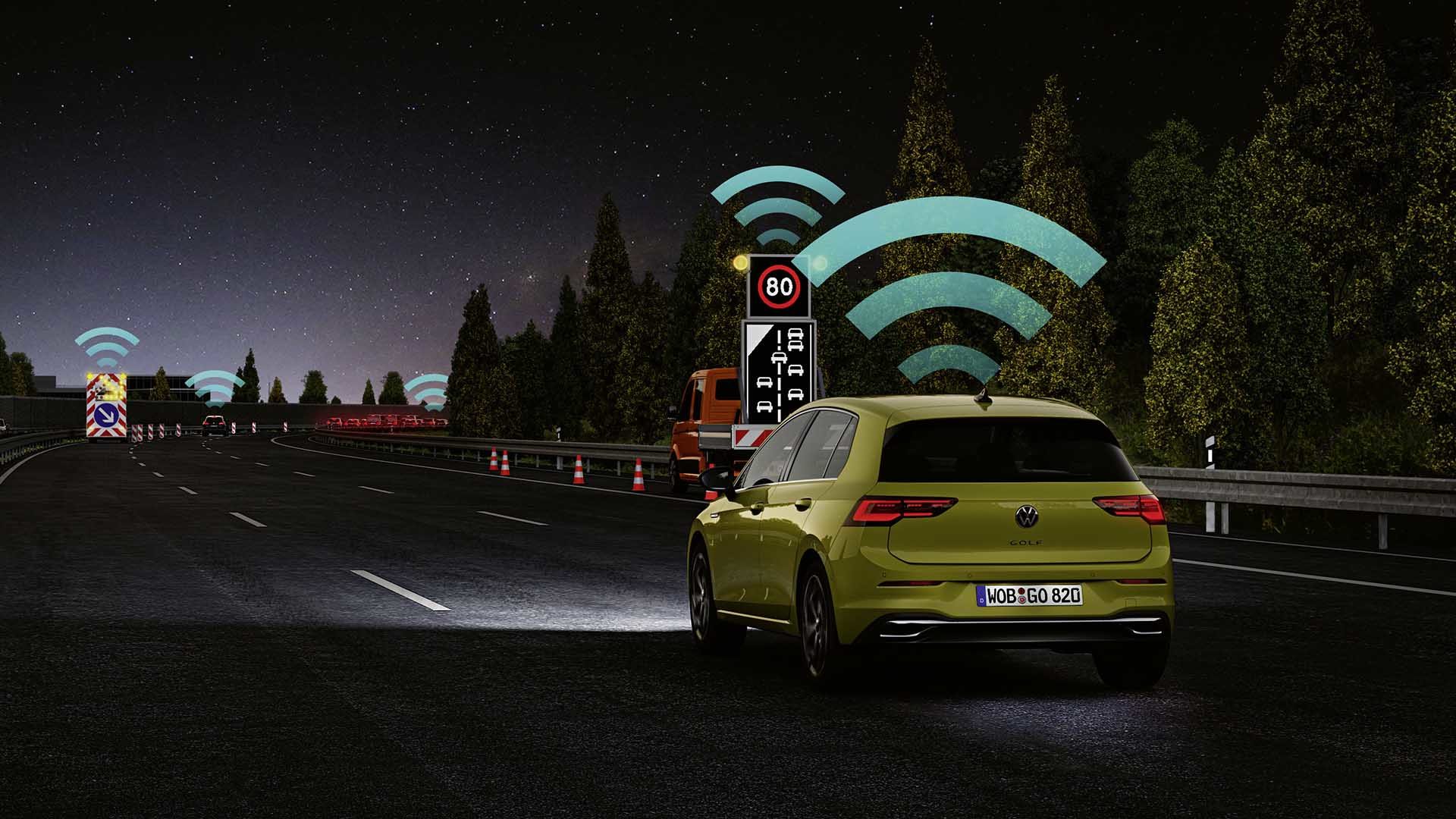
The term ‘connected car’ is often used, but what does it actually mean? Well, in basic terms, a connected car is one that has the ability to communicate wirelessly with other devices.
It might be a relatively simple interface like a smartphone connection to allow music playback. It could also link to the car manufacturer, so the vehicle’s software can be updated over-the-air without a service appointment. Increasingly, it might also involve a remote connection to the owner’s smart home system.
The current Volkswagen Golf helped bring connected car technology to the mainstream. It was the first vehicle in Europe with Car2X technology as standard, which uses a type of wi-fi tailored to local communication between cars. It does not use the mobile phone network, which means blanket coverage with a radius of up to 800 metres.
Thanks to a traffic hazard alert function, the Golf can alert its driver within a matter of milliseconds. In one scenario, the ‘emergency services vehicle’ icon will appear on the digital instrument panel, with an arrow indicating the direction from which the police car, ambulance or fire engine is coming. It will also indicate the approximate distance and sound an acoustic warning.
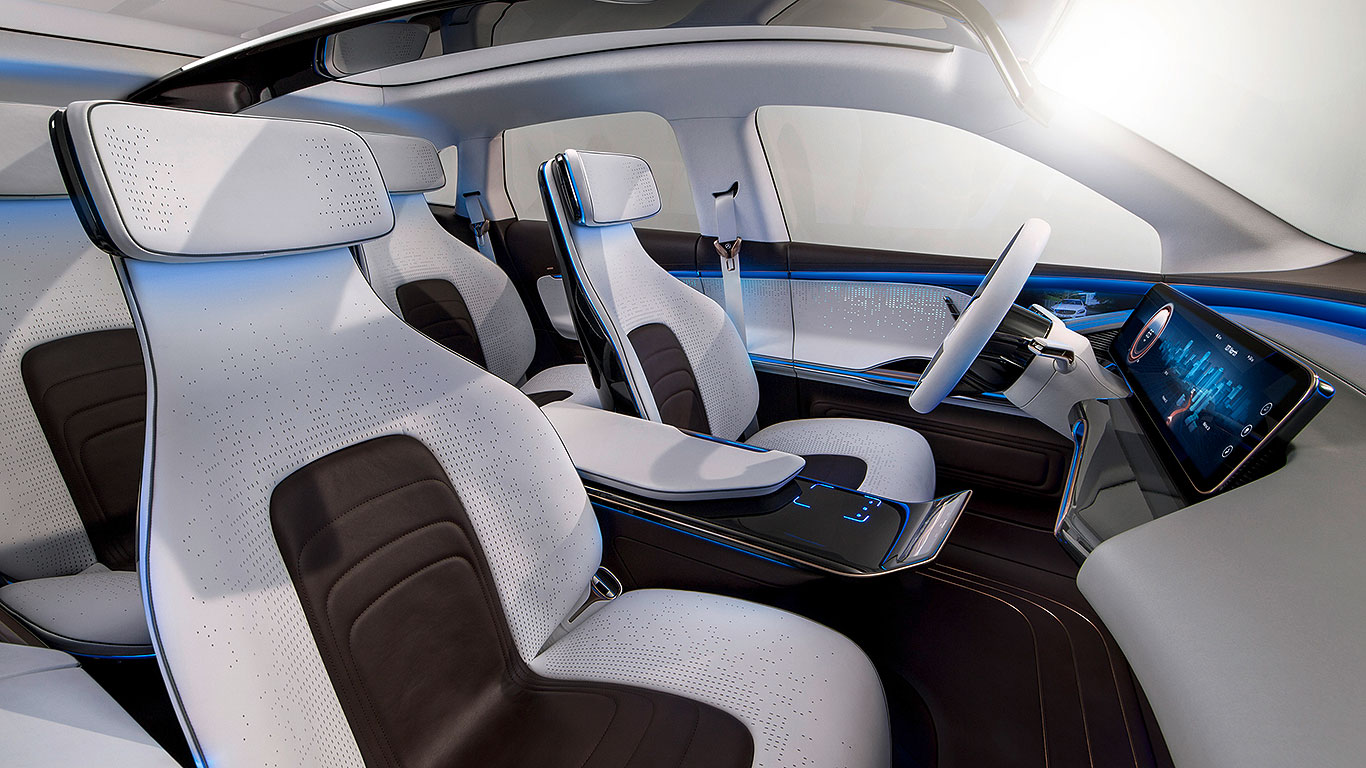
Cars can be connected to each other and the road infrastructure around them. They can be programmed to travel safely in tight groups at high speed, anticipating traffic signs and signals, reacting to changing road conditions, and avoiding collisions by ‘seeing’ hazards half a mile or more down the road.
All these connected technologies together add up to nothing short of a revolution. The connected car is arguably the most significant safety advance since the seat belt, and will be the biggest change to the way we drive since the horse was put out to pasture.
So, what is the car connecting to?
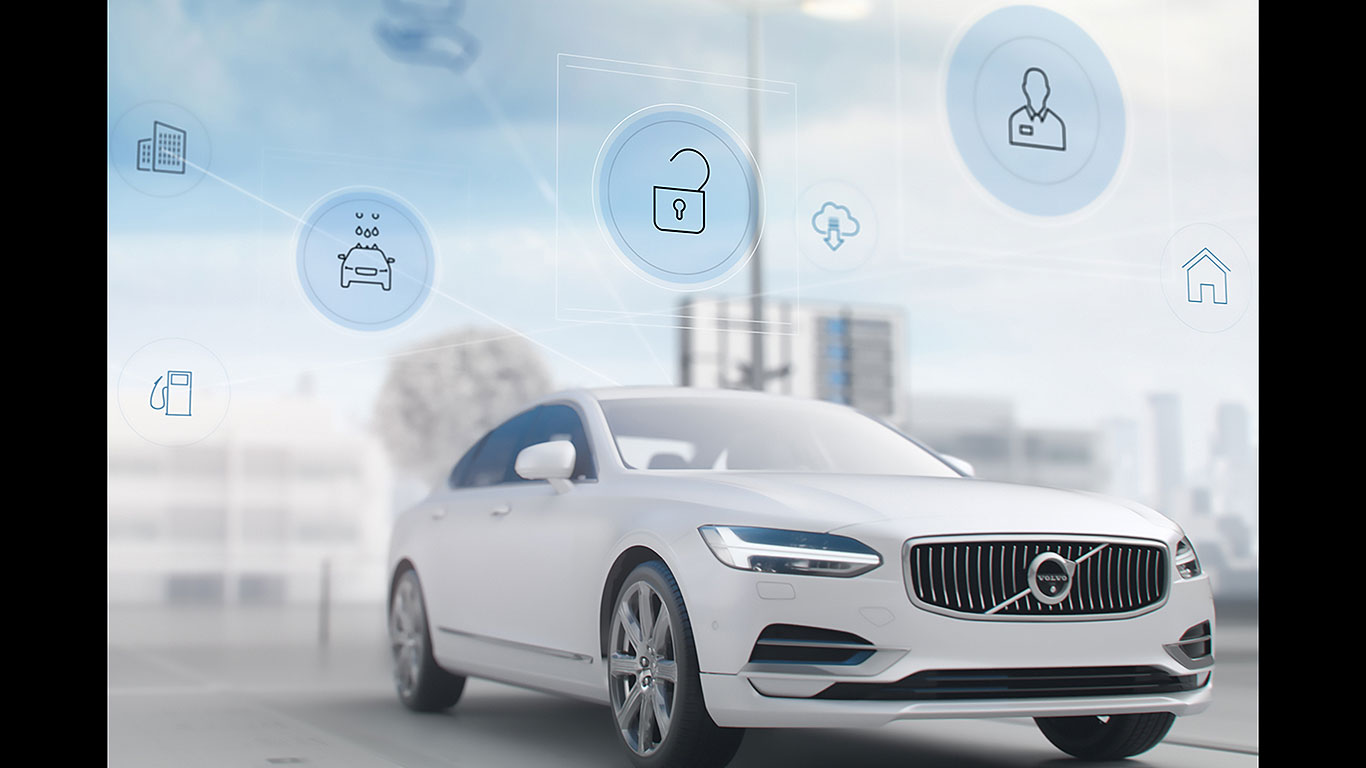
There are two basic categories of car connectivity. The first is via a mobile phone network such as 4G or 5G, which includes communication, internet and/or cloud services. Cloud services are the ones we use every day on our smartphones.
Want to hear a music track? Your device sends a request to a server that sends the coded music back to it, allowing the song to be played. Need directions? Your connected device searches for GPS satellites, mobile phone masts, wireless connections, or a combination thereof to position itself, then requests map data from a server, perhaps with a few restaurant recommendations from the internet thrown in for good measure.
This kind of connectivity also allows for the Internet of Things (IoT) to be accessed. The IoT is anything that has an on/off connection to the internet, from a toaster, to a heating system, to various components in a car. The toaster can access the latest time and temperature recipes for various breads. A heating system can be turned on while the homeowner is sitting in traffic, ensuring a comfortable house at dinner time. A car’s main computer can receive an updated operating system.
The second kind of car connectivity is dedicated short-range communications (DSRC). DSRC allows cars to securely and privately talk to each other, as well as the infrastructure around them: a collective system called vehicle-to-everything (V2X). It has extremely low latency (it’s fast, in other words) and enables the high data transmission rates necessary to manage multiple vehicles in traffic.
In the the future, DSRC will work in sync with mobile phone technology to keep cars connected.
Connected car features available now
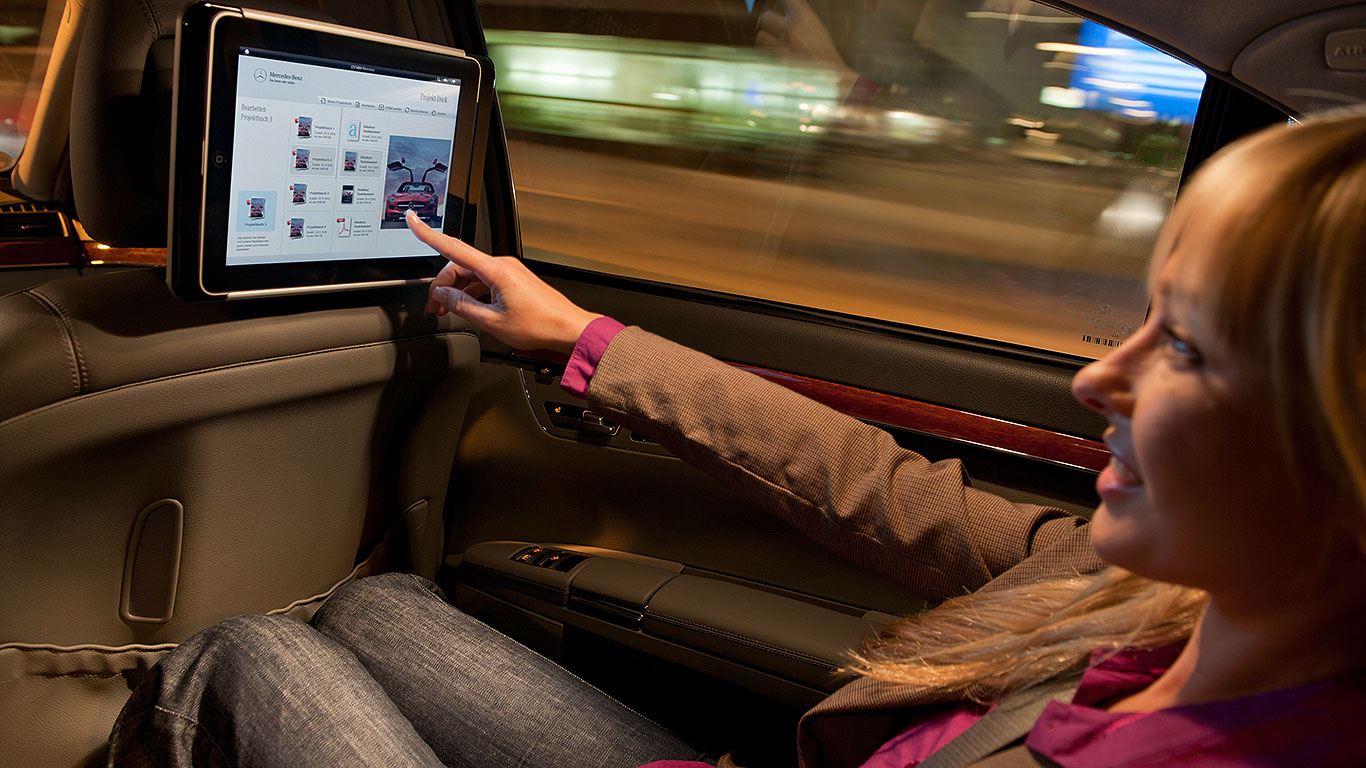
Most car manufacturers today offer some level of connectivity, whether it be in the form of an dashboard system that connects the car to existing apps and services, or more involved experience that allows drivers such features as scheduling service appointments, having the car refueled, or controlling a smart home system.
A quick sampling of available services demonstrates the breadth of today’s connected car ecosystem. There are, of course, dozens more applications available, and the list is growing every day.
Apple CarPlay and Android Auto
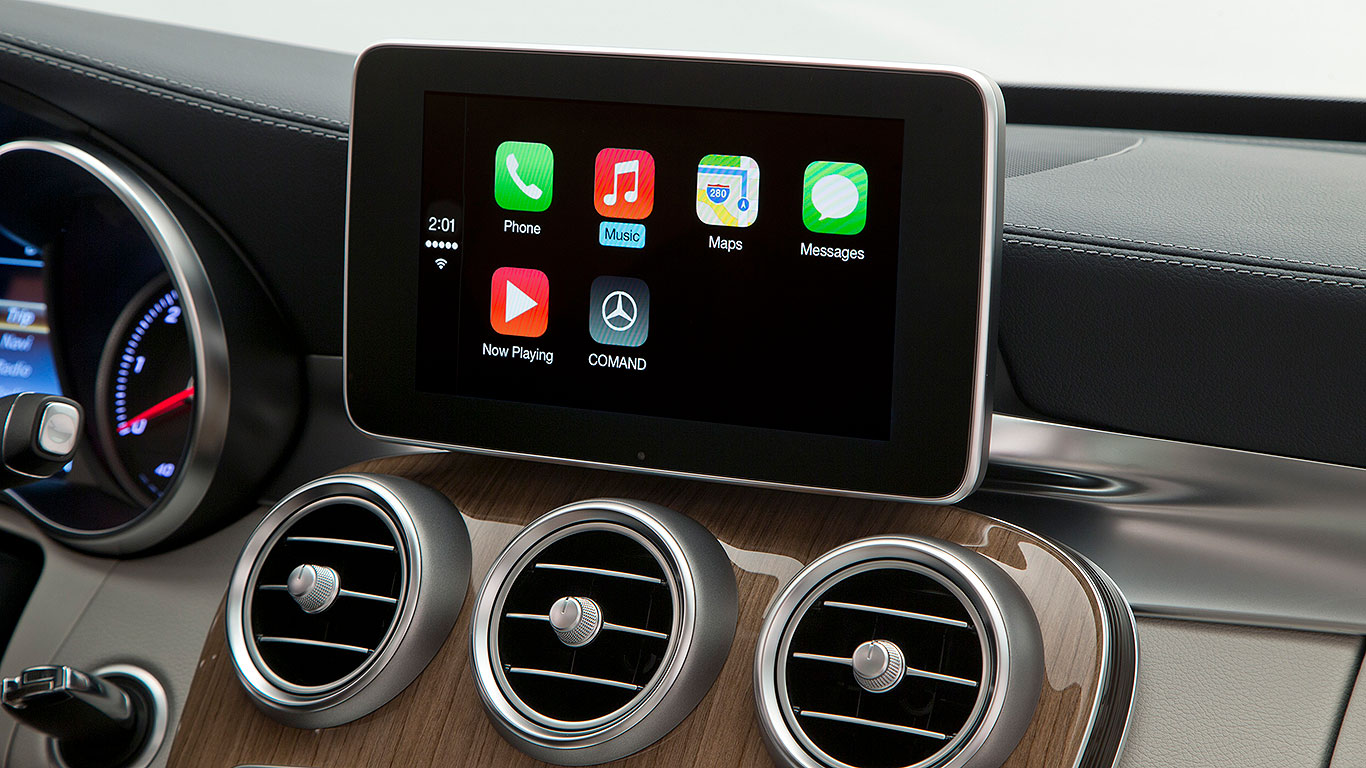
Apple CarPlay and Android Auto can display selected apps from your smartphone on the car’s built-in screen. The interfaces are very similar to those found on your phone, so are familiar and easy to use.
Streaming music, directions, text messaging, and phone calls are all available, and can be accessed in a way that doesn’t distract the driver. You can also access content, such as music tracks or podcasts, that are downloaded onto your phone.
Amazon Alexa
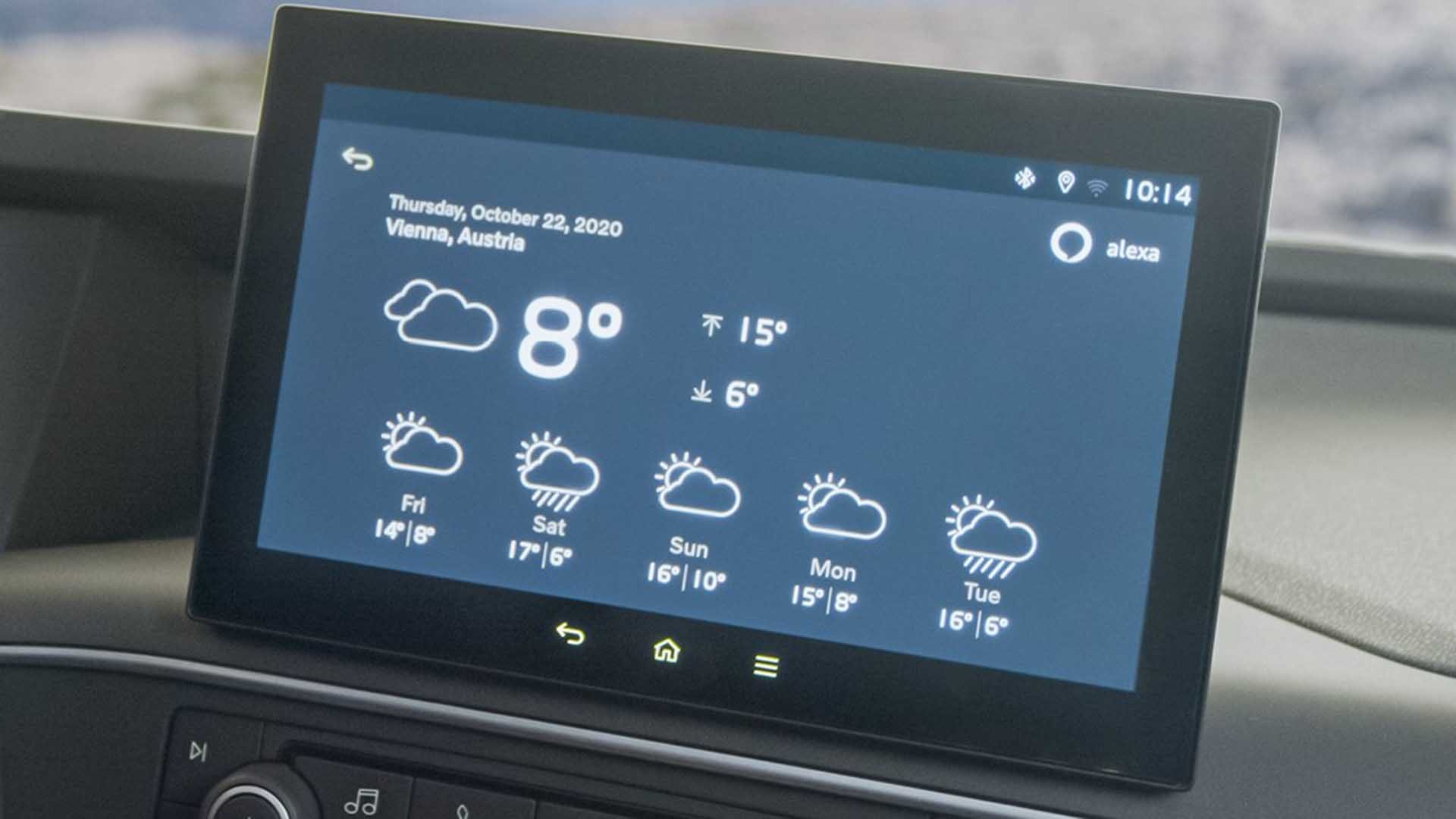
Many manufacturers are linking their infotainment systems to home automation services like Amazon Alexa, allowing consumers to control lights and thermostats from the car. While at home, the system interacts with the car, so it can be warmed up, unlocked or ready to go on cold days. Driving the vehicle requires a proximity key, discouraging theft.
The tech is especially beneficial for electric cars, which can be heated or cooled in advance, using your home electricity supply, without depleting the vehicle’s batteries.
Alexa also offers a broad range of additional voice-activated services, such as a location search that transfers your destination to the car’s navigation system, audiobook search and play, and shopping.
But what about hacking?
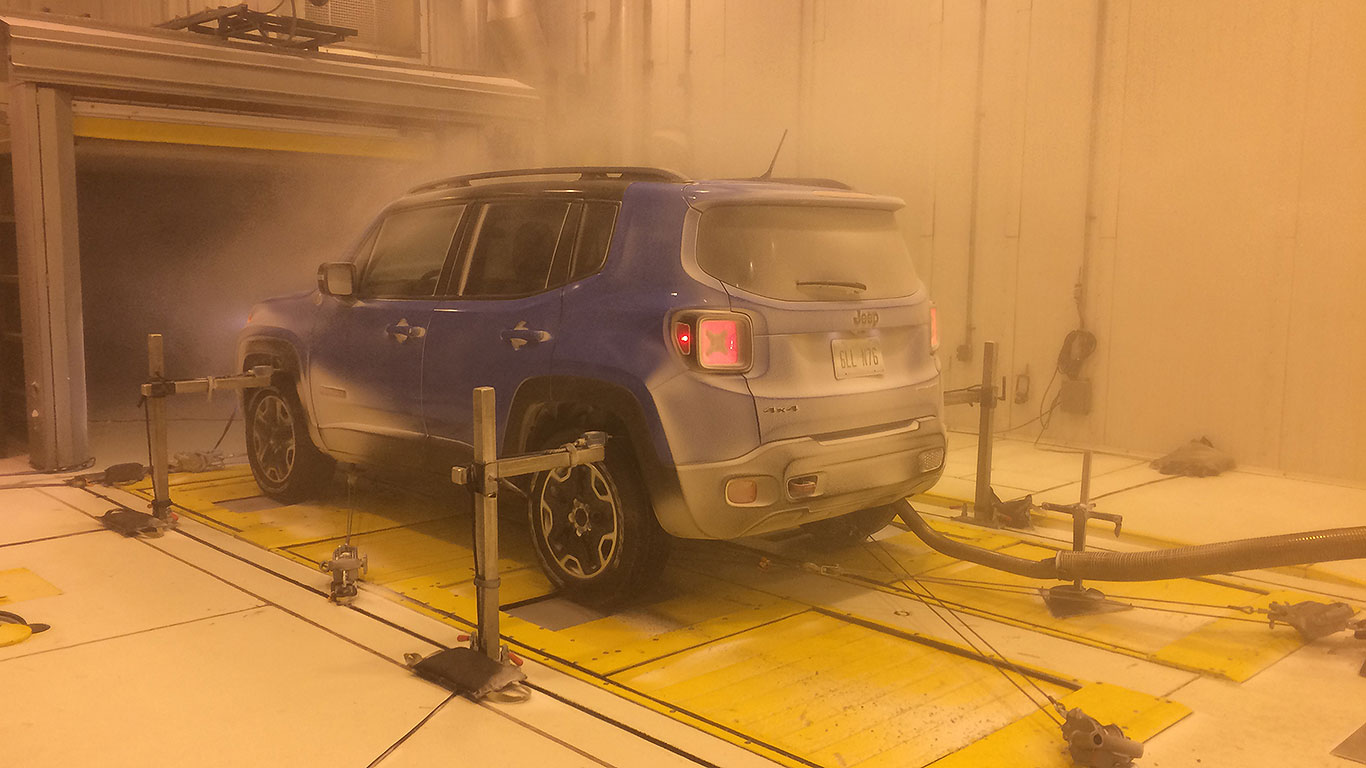
There are dozens of processors on a vehicle and they are wired into everything: engine and transmission, brake actuators, seat belt pre-tensioners, automatic bonnet closers, and much more. These electronics and their predecessors have been in vehicles for generations now, and the software that runs them has built up year after year, layer after layer.
There are tens of millions of lines of computer code necessary to make all these components work properly, and that number will only go up in the future. This older, less secure software is everywhere and could be vulnerable to attack.
Stories of vehicles being taken over by hackers exposing security flaws in those systems have made headlines. The transmission, braking, acceleration and steering were all controlled remotely and the driver was placed in a dangerous and terrifying situation.
What was a bit underreported at the time, however, was that the hackers involved were researchers, not criminals, and that it took them about a year to gain control of the vehicle. They also used a hard connection, a cable plugged into the subject vehicle, in order to understand and break into the system
The flaws those researchers exposed have made cars more secure by highlighting the need to separate the control side of the vehicle from internet-connected systems.
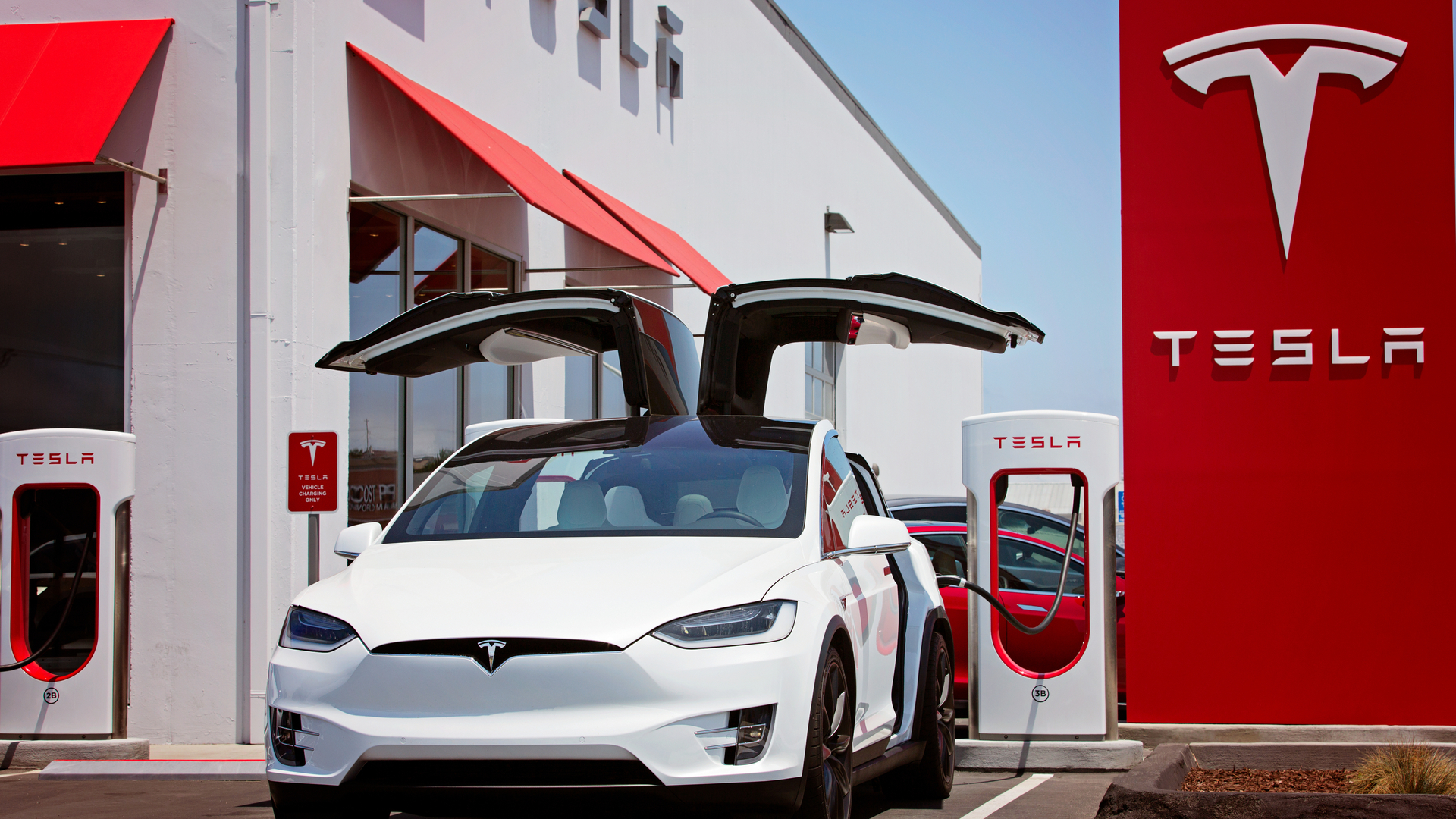
Researchers in Belgium discovered they could hack and steal a Tesla Model X in a few minutes using a Bluetooth-connected key fob. The equipment used to hack into the Tesla cost no more than a few hundred pounds. Tesla responded by issuing an over-the-air software update.
Smartphone hacks are another problem. Without security protocols in place, malicious software can unknowingly be downloaded from the internet or even hidden inside a totally unrelated app. This software looks for an automotive control app and launches invisibly alongside it. The vehicle’s credentials and passwords are recorded and transmitted, allowing the car can to be located, unlocked and sometimes even started for a brief time. However, because of the previous research work, the control systems in most cars are disconnected from the smartphone app. Simple two-factor authentication, fingerprint recognition or proximity key requirements would also avoid the hack entirely.
Hacking is indeed a concern, but manufacturers and suppliers are working hard to keep connected cars safe, and to make them more so in the future.
What comes next for connected cars?
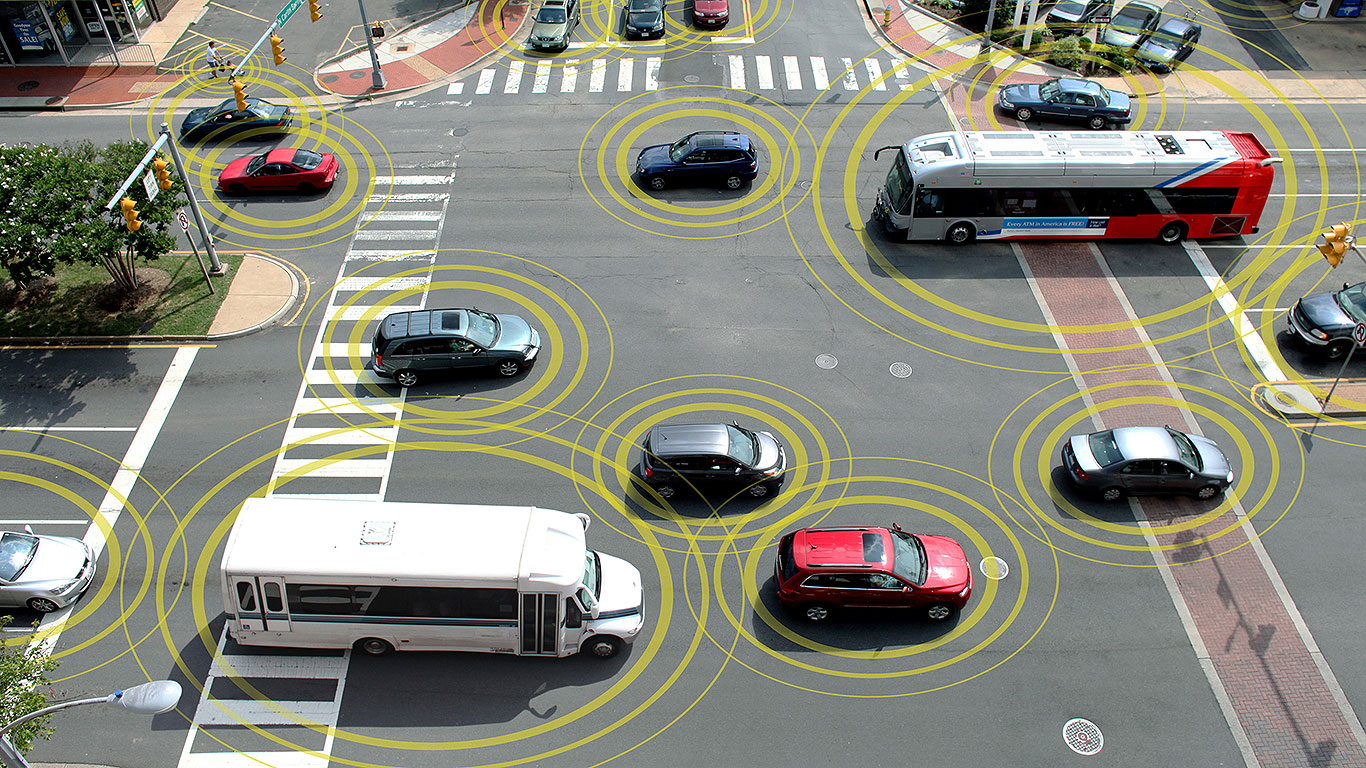
Connected cars might seem like little more than the latest gadget, but the advances those gadgets pioneered will soon make driving safer and more efficient than ever.
As semi-autonomous car components, such as automatic emergency braking systems, become mandated by law, connectivity has more of a pivotal role than ever in near-future vehicles.
What about V2X technology?
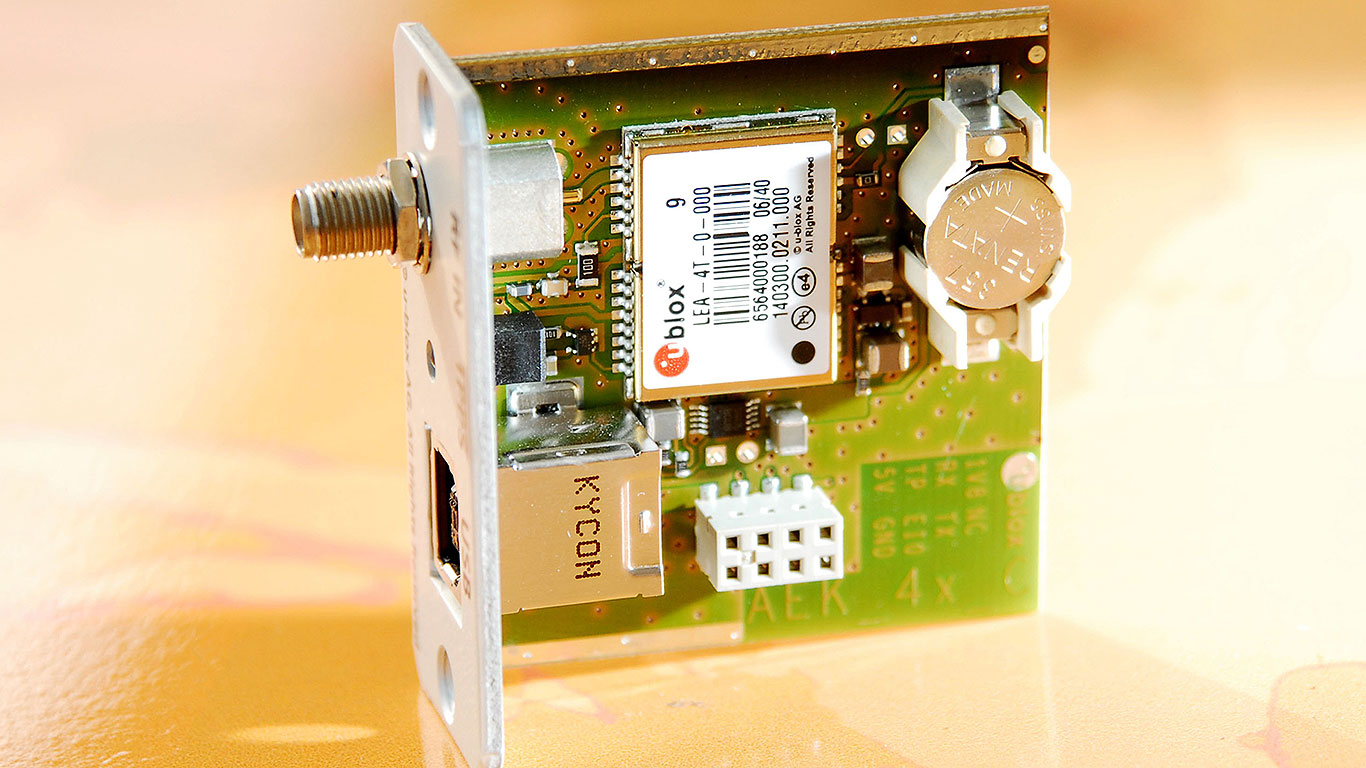
Cars use DSRC to connect to each other and the road around them. Vehicle-to-everything (V2X) is two short-range, wireless-based technologies designed from the ground up to be both private and secure: vehicle-to-vehicle (V2V) and vehicle-to-infrastructure (V2I). Their main function is to prevent accidents and save lives.
V2V works by transmitting and receiving key data such as vehicle position, speed, direction of travel, braking and steering input. Additional systems spot pedestrians, road hazards, emergency vehicles, potentially unsafe drivers and more. V2I sends information about things like traffic lights, construction projects, bridge height, weather reports and pedestrian crossing locations. Working as one system, V2X creates a complete picture of the driving conditions surrounding the vehicles.
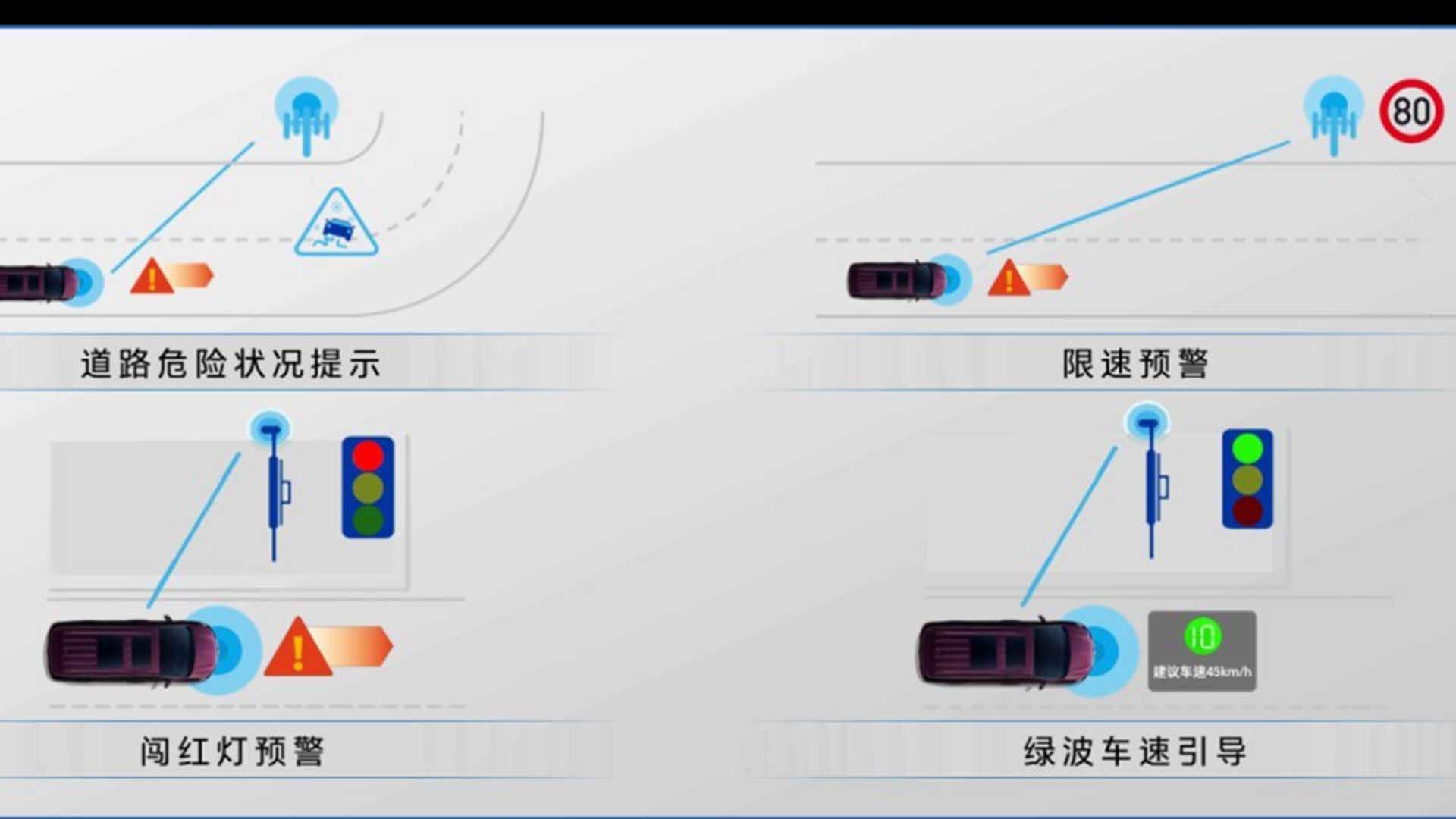
A future group of V2V-enabled vehicles, such as the Chinese-market Buicks in the image above, will travel together in a convoy that acts like a school of fish or flock of birds, one group made of myriad individual movements and fluctuations.
If a pothole is detected in one lane, the impacted car will swerve slightly to avoid it, but other vehicles may not have to. Drivers can join or leave the convoy; there is no leader. The cars can be tightly packed together at high speed, taking advantage of group aerodynamics to improve fuel economy.
In city traffic, speed is adjusted so that red lights and other stops are avoided. Pedestrian crossings broadcast their occupants, and the vehicles avoid impacts. Emergency vehicles are automatically given the right of way, improving public safety. The position of empty parking spaces is broadcast, putting an end to circling the block. No one gets rear-ended at traffic lights by somebody who can’t put down their mobile phone, because both vehicles are paying attention.
The next steps
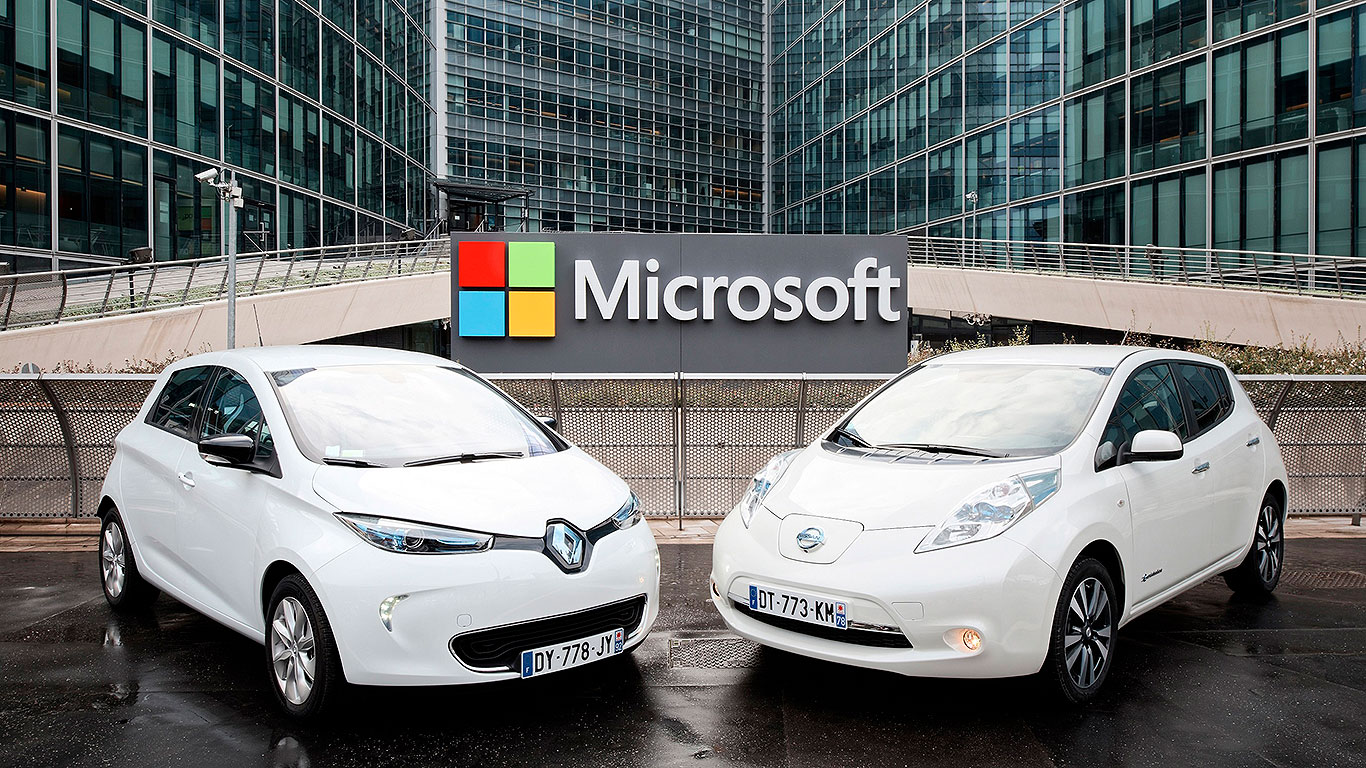
The individual technologies that create the connected car are advancing at breakneck speed. Manufacturers are now working together with suppliers and lawmakers to bring all the pieces together as a whole. Companies such as General Motors, Qualcomm and Microsoft have invested heavily in the technologies, and face stiff competition from competitors.
As the mobile phone market reaches full saturation and therefore declining growth, companies are looking to the connected car to increase revenues. Qualcomm released Snapdragon processors and modems specifically for the automotive market, including data collection, analytics, parking assistance and wireless electric vehicle charging, as well as infotainment.
Microsoft launched its Connected Vehicle Platform to speed up connected car development, built on the Azure cloud platform. Unlike car manufacturers, Microsoft already has and continually develops a living, agile, cloud-based platform. The software giant is working with several manufacturers and developing telematics, predictive services, in-car productivity, advanced navigation, advanced driver assistance systems and autonomous vehicle tech.
People spend a huge amount of time in their vehicles. Connected cars offer a plethora of safety, comfort and convenience advantages, with only a slight increase in cost. All the manufacturers are on board, the communications and information companies are on board, and even lawmakers around the world are moving to embrace the benefits of connectivity. The connected car is here to stay.
ALSO READ:
How to find the cheapest petrol and diesel near you